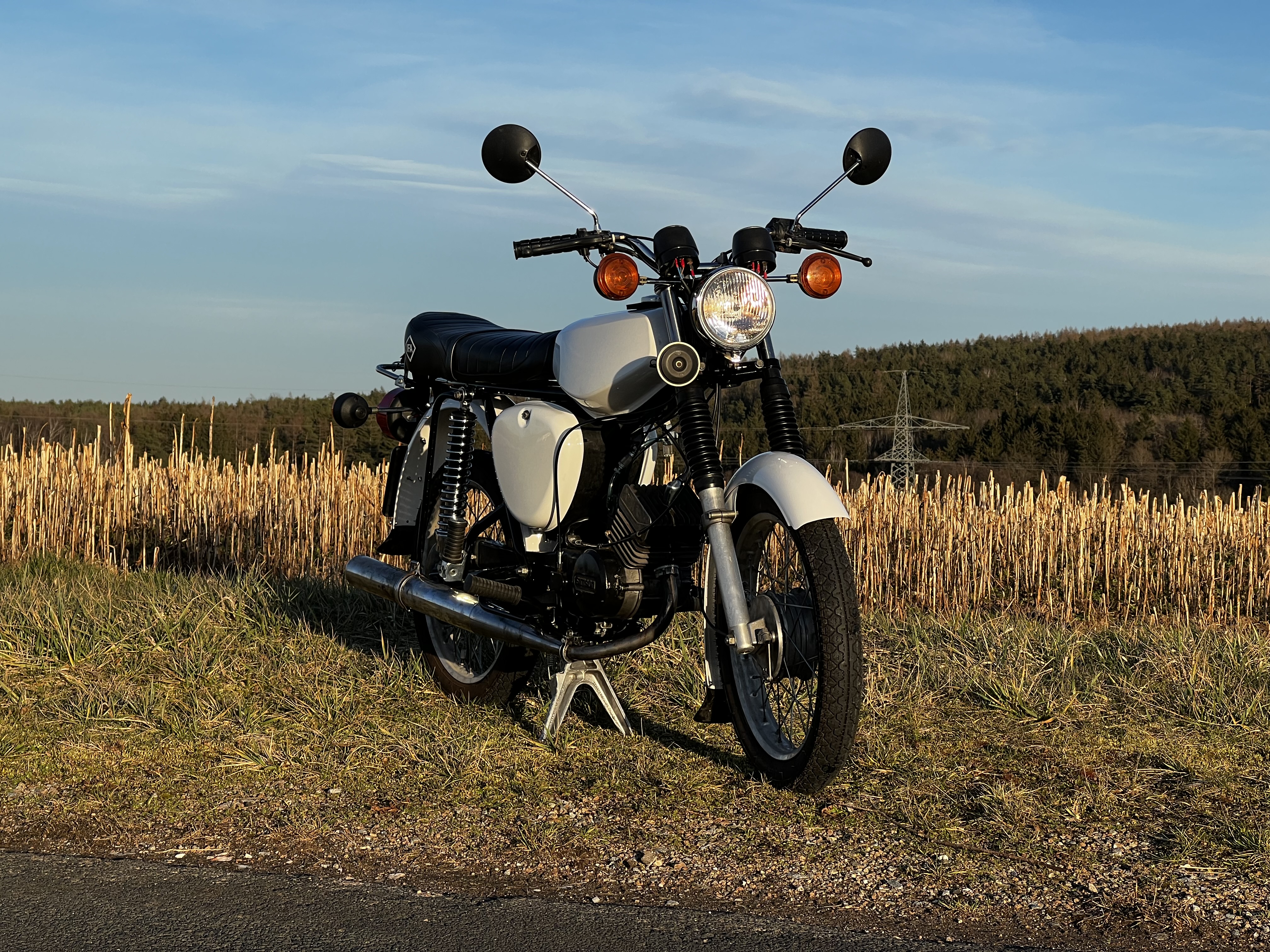
Over the course of the last summer, I took it upon myself to rebuild an old Simson S51 moped, which - according to Wikipedia - is the most built german moped.
I mostly did so because these things are allowed to go 60 kilometers per hour legally, however over the course of building this thing I learned of the story behind the brand and the story of how it even got here.
The story behind my S51/1C.
Sidenote: The story of german division and reunification is a complicated topic, and most of this is as I was told by my grandfather, so I (sadly) won’t cite sources here. If you happen to know more about this “east germans get free railway tickets in the west”-program, please let me know.
Back when East and West Germany were in the process of uniting, my grandfather used to work for the west german national railway, somewhere close to the inner-german border.
Given that the border was no longer guarded, a lot of east germans wanted a better life in the west. So they drove to the closest west german railway station and headed west via rail, often just abandoning their motorcycles, mopeds and cars at the station.
My grandfather then gave them free tickets to wherever they wanted to go in west germany and was often offered east german cars and bikes for free or extremely cheap, an opportunity he didn’t pass up on. The moped that I rebuilt originally cost him 100DM (about 90EUR in today’s money when you add in inflation). He kept it because it was the latest and greatest in the collection, a 1989 model with fancy things like an RPM-gauge, 12 volt electronic ignition and halogen front light).
The last surviving insurance record of this moped is dated from 1994, some time after that my granddad disassembled it entirely (because he wanted to get it repainted, which never happened). Some 27 years later, I told him that I would be interested in attempting to restore it, so he told me that I could have all the parts if I wanted to.
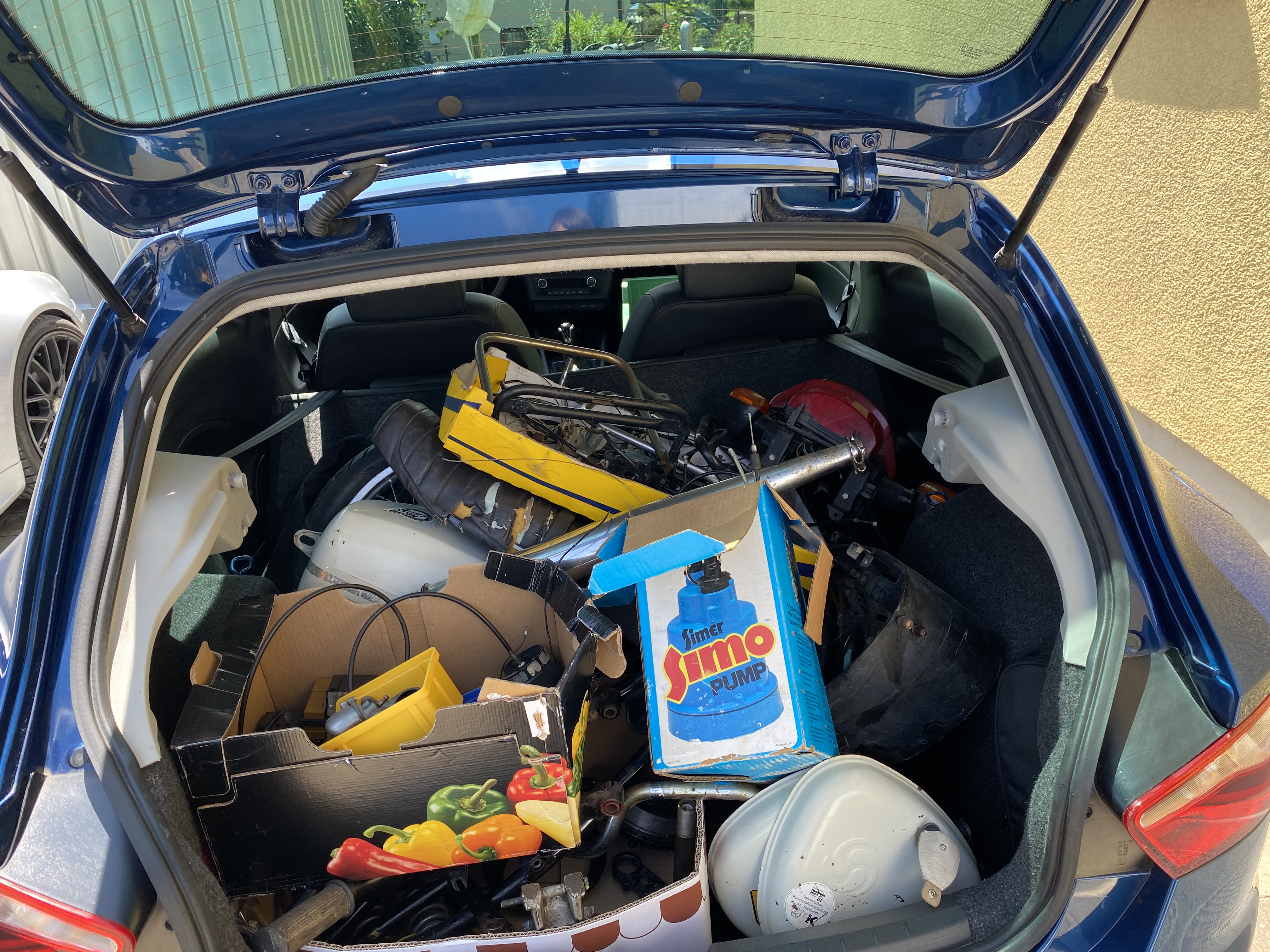
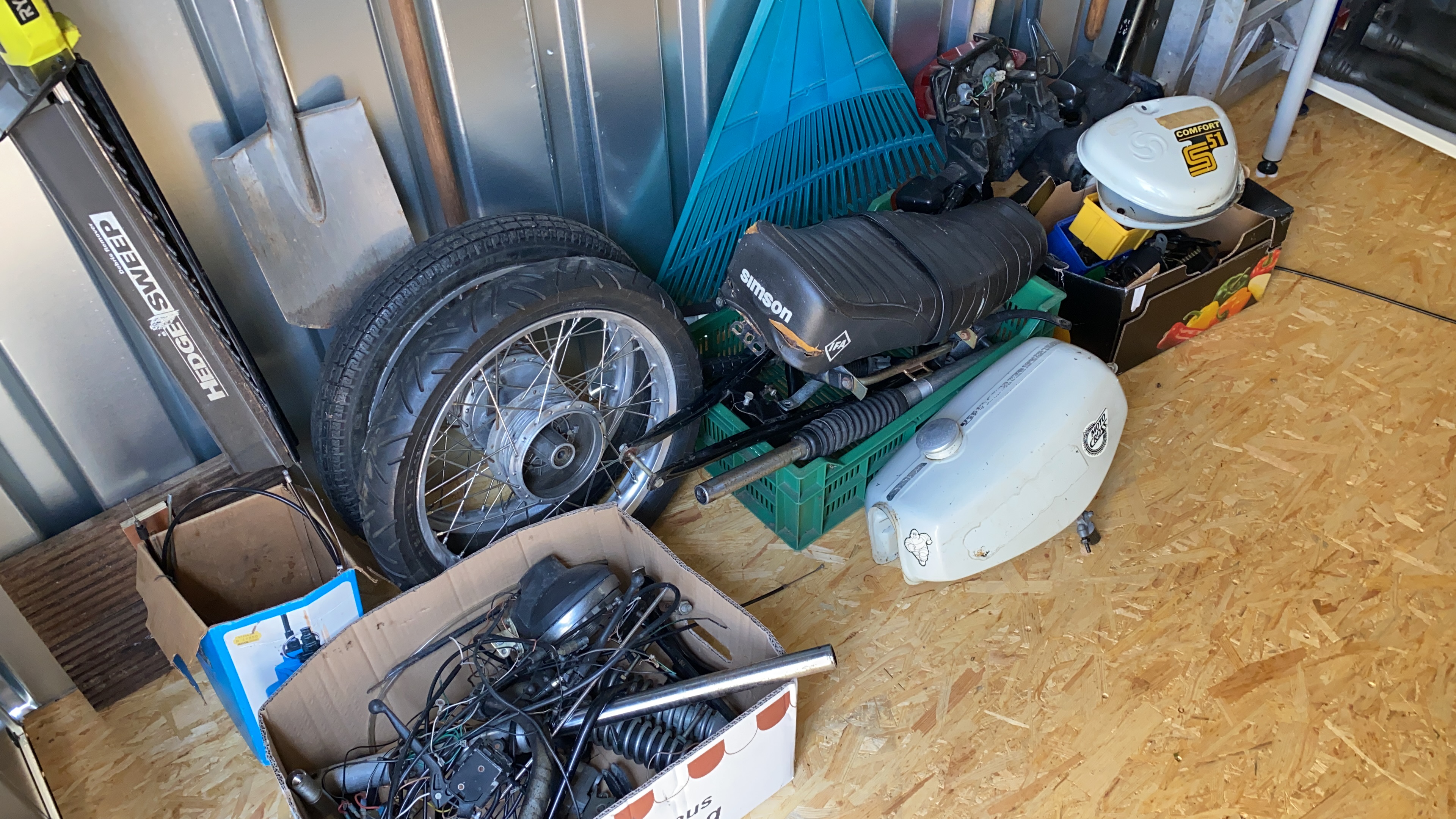
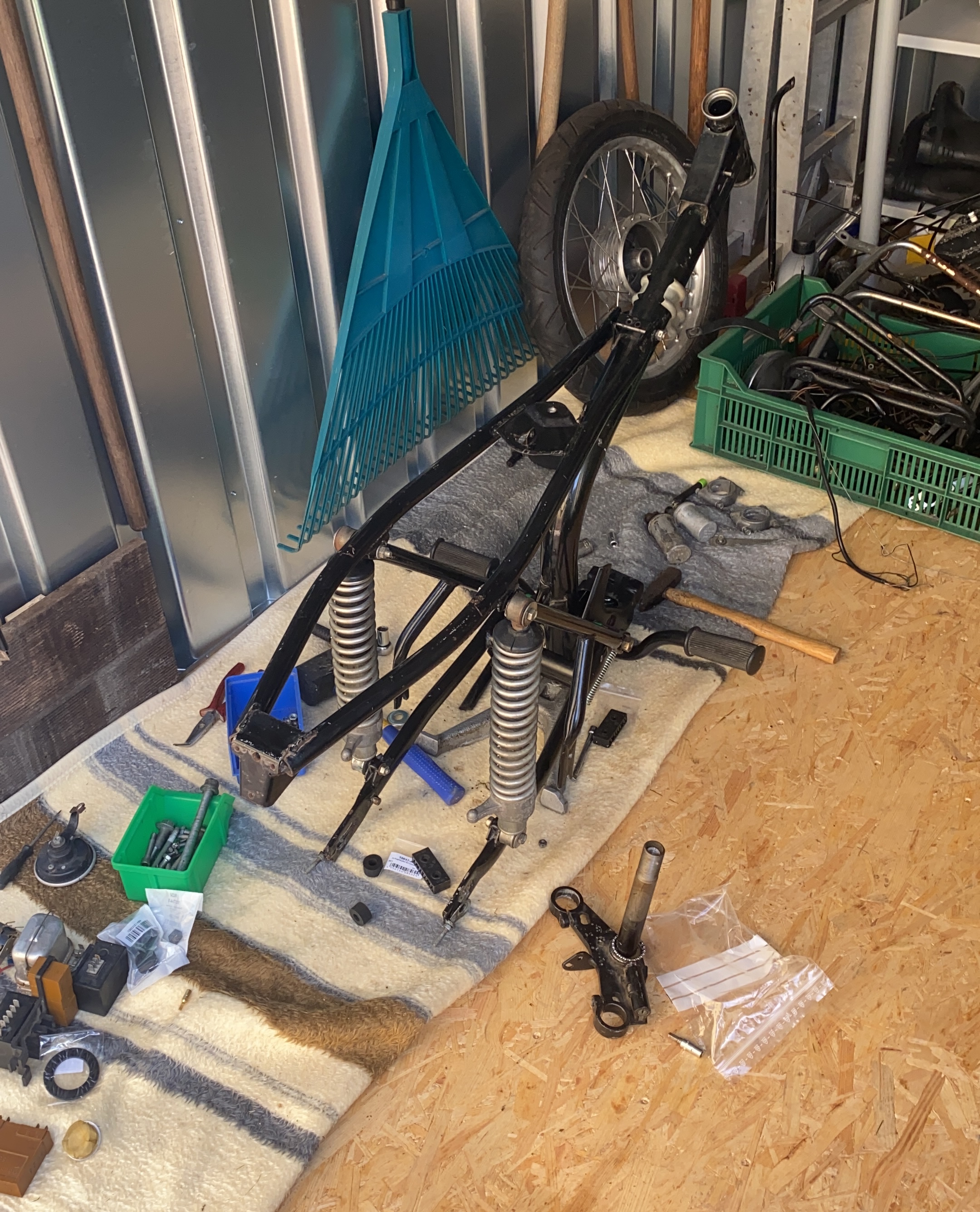
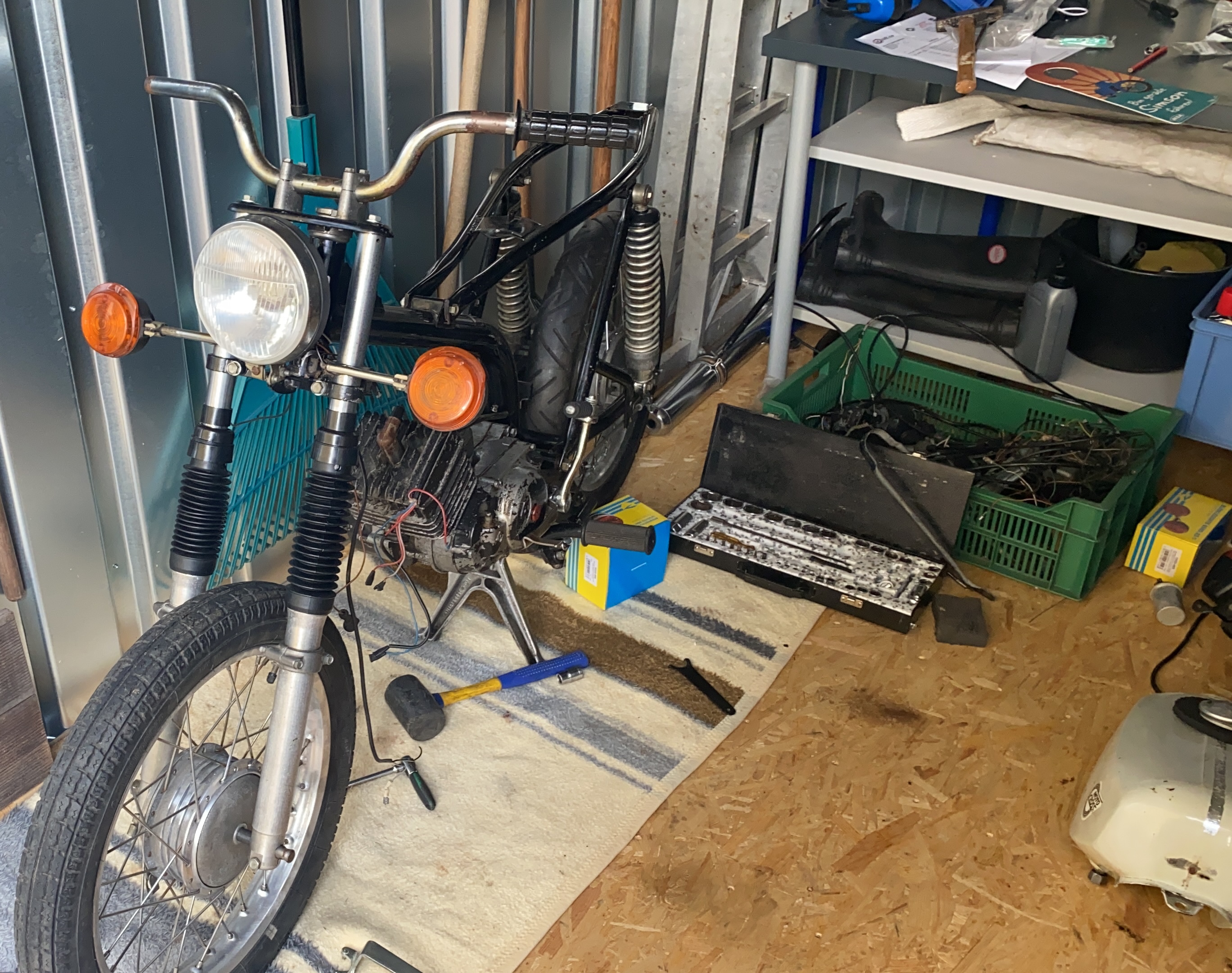
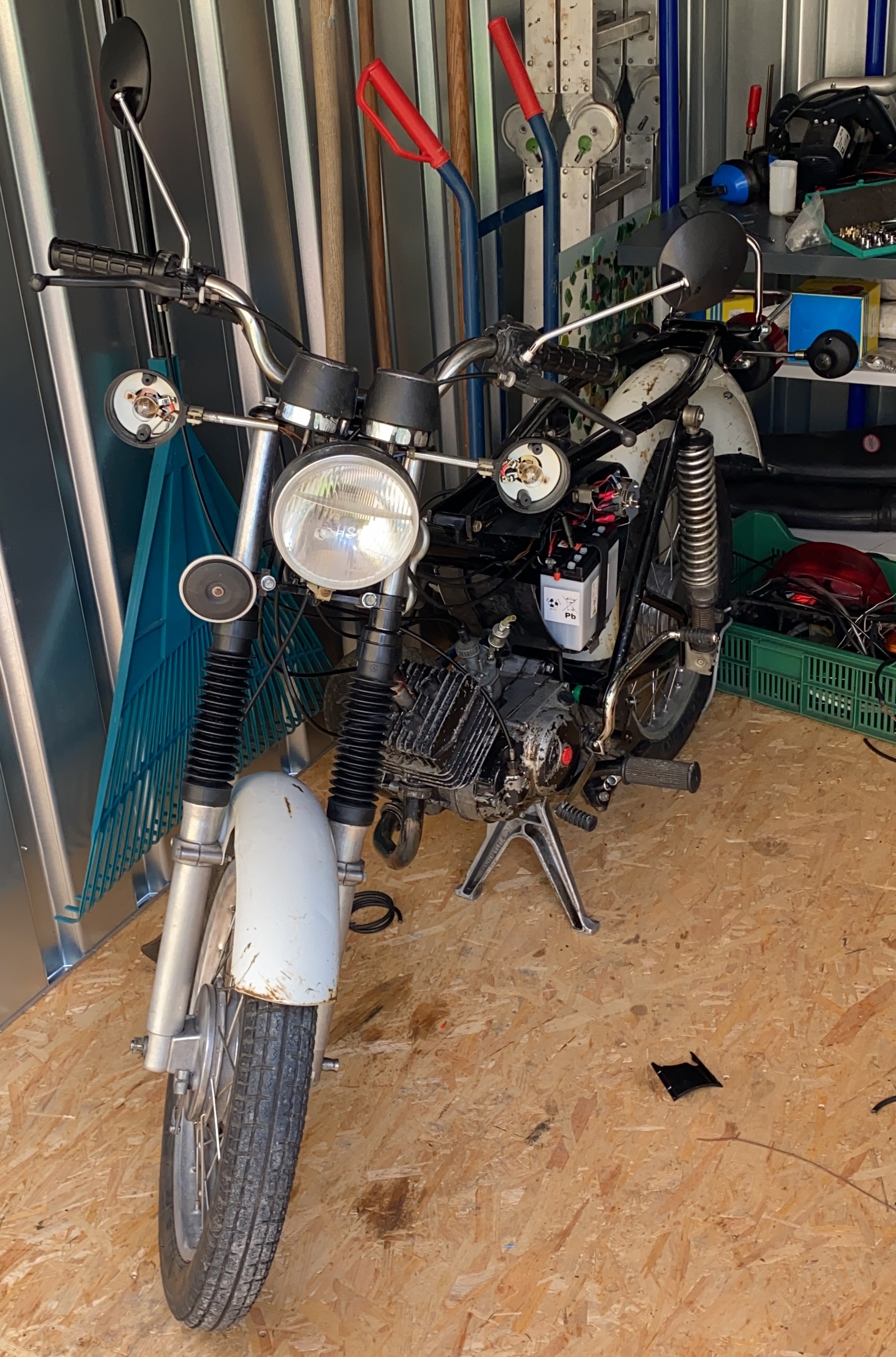
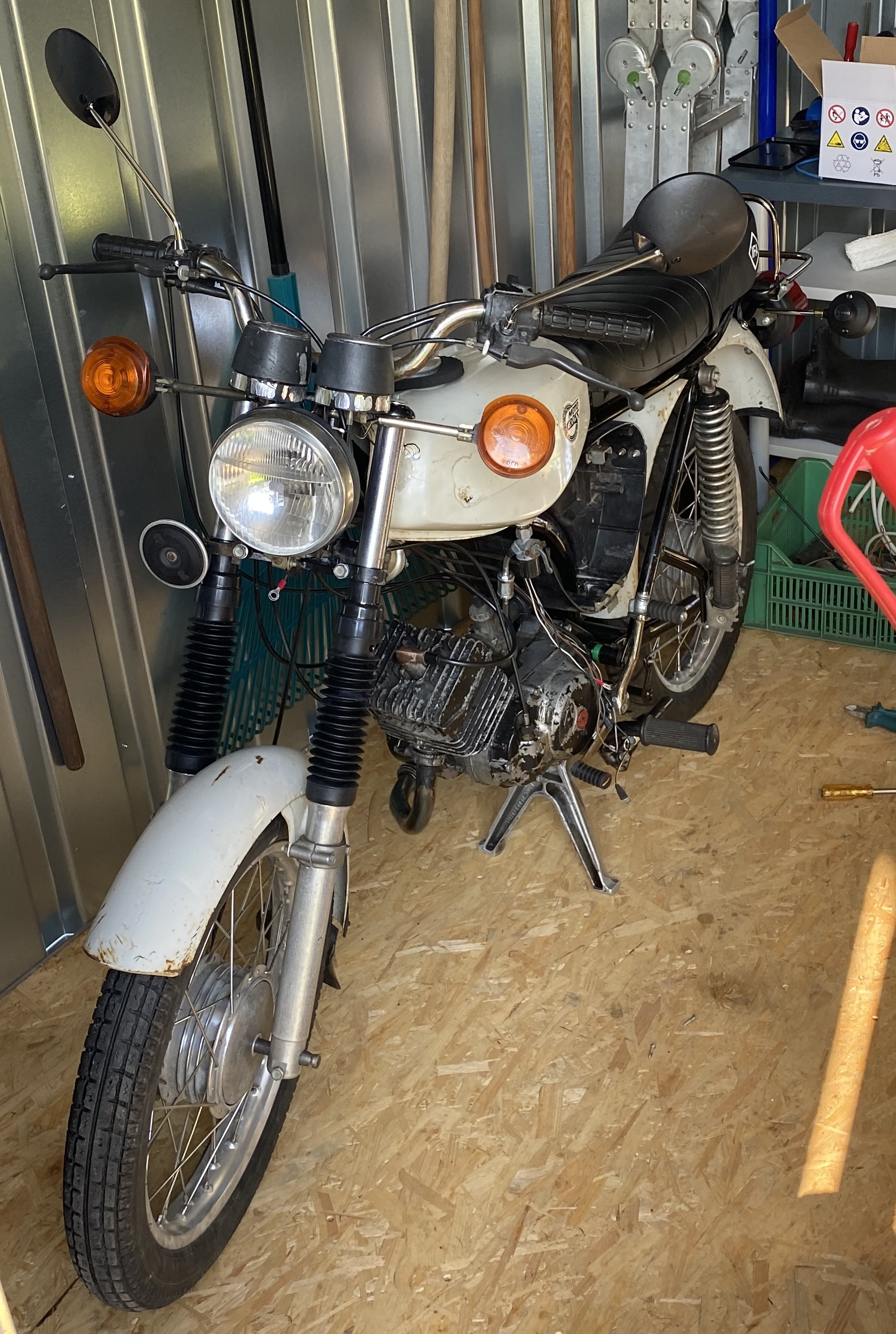
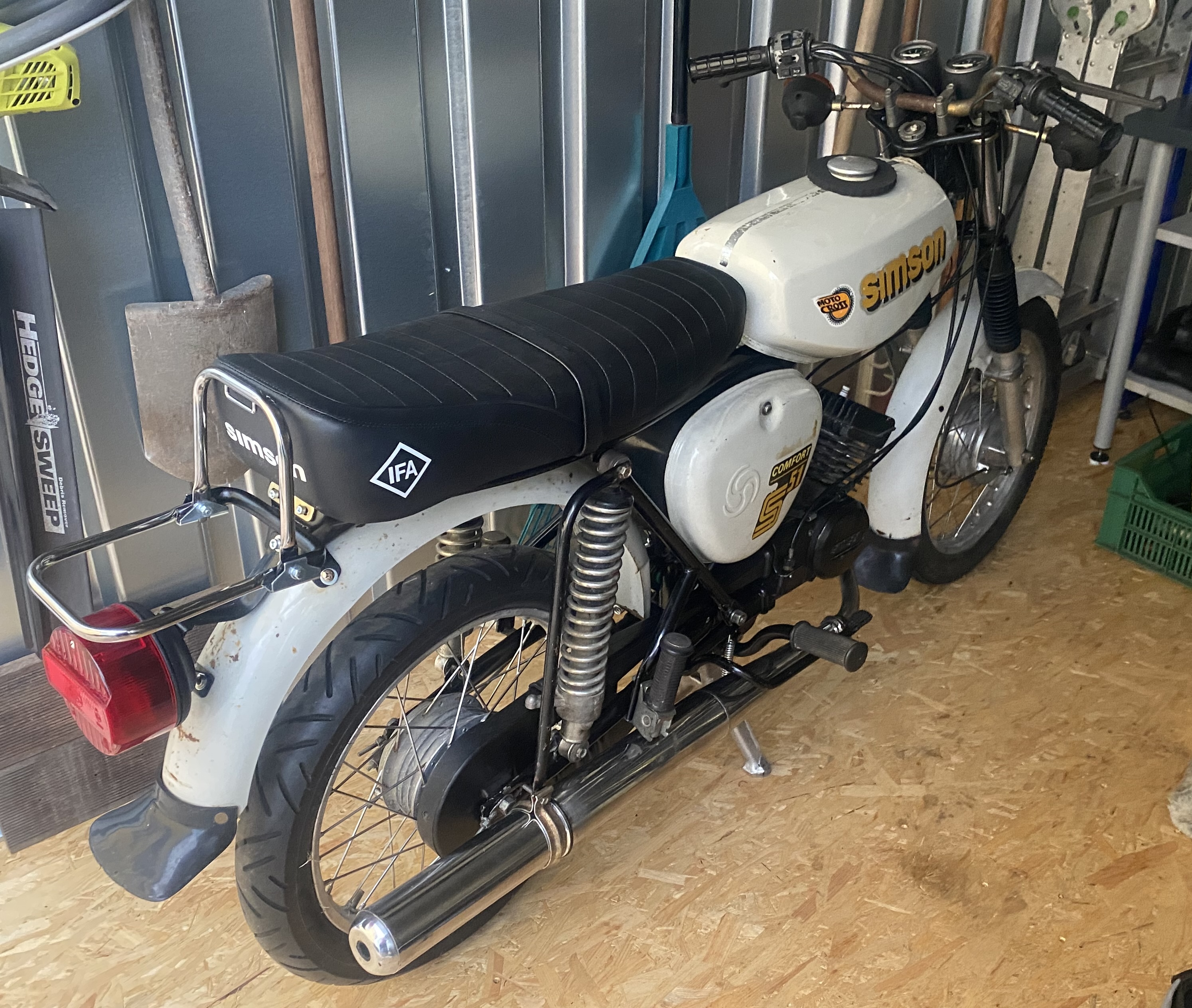
The progression of this project: From a pile of parts to an actual moped.
So what makes these things so popular?
To understand why Simson Mopeds are as sought-after as they are, you have to know a few things about german laws surrounding mopeds (ger. “Kleinkrafträder”), as well as the mopeds themselves.
The legal things.
Sidenote: We’re going to dive deep into German laws. I’ll cite sources, but keep in mind that most of these sources are going to be in german.
In the EU, you have the so-called “AM”-license class. When getting your “B”-license (which allows you to drive cars), you also get the “L”-license (allowing you to drive small tractors) and the “AM”-license. Furthermore, you can get the “AM”-license when you’re as young as 15 years old, making them incredibly accessible and valuable to teenagers wishing to be independent from their parents needing to drive them everywhere. The “AM”-license class permits you to ride mopeds (among other things) as long as they meet the following requirements:
- The engine must not be bigger than 50ccm
- The engine power must not exceed 4 kilowatts
- The top speed must not exceed 45 kilometers per hour
When it comes to top speed, however, there are two notable (national) exceptions:
- If the vehicle has been registered before December 1st 2001, the top speed must not exceed 50 kilometers per hour.
- If the vehicle has been registered in East Germany before February 28th, 1992, the top speed must not exceed 60 kilometers per hour. Let me explain.
Back when East and West Germany were divided, they had different laws surrounding mopeds. In West Germany, the “4”-license class was required to ride a moped, and their top speed was not allowed to exceed 50 kilometers per hour. In East Germany, the “M”-license class was required, the top speed however was not allowed to exceed 60 kilometers per hour. When East and West Germany reunited, an exception was made in the German Reunification Treaty: Vehicles that were classified as mopeds in East Germany are to be classified as mopeds in West Germany, as long as they had first been registered before February 28th, 1992. This, by extension, means that all mopeds that had been registered in East Germany are allowed to go 60 kilometers per hour to this day. Even when the license classes were unified across the European Union in 2006, this national exemption persisted.
The moped things.
When this exemption came about, they thought that these mopeds would just rust away into obscurity. Oh how wrong they were. Because of this exemption, these old mopeds have gained popularity all across Germany (because go fast feel good). As a result, a huge aftermarket scene has popped up, ranging from tuners to companies producing aftermarket parts based on the original blueprints.
This has gotten to the point where the age-old “Ship of Theseus”-problem (“Is it still the same if I replace all the parts?“) - at least for these bikes - has been solved. Every single part can be replaced, as long as the frame number (which is debossed into the frame and type label) persists, everything can be upgraded or restored. And because of the so-called “open principle” utilized by the designers of these mopeds, everything is accessible (so you don’t need to remove body panels to get at certain components), easy to understand and easy to work on (I’ve managed to get from a pile of parts to a riding moped in ~4 weeks!), making them incredibly open to customization and optimization in every single part.